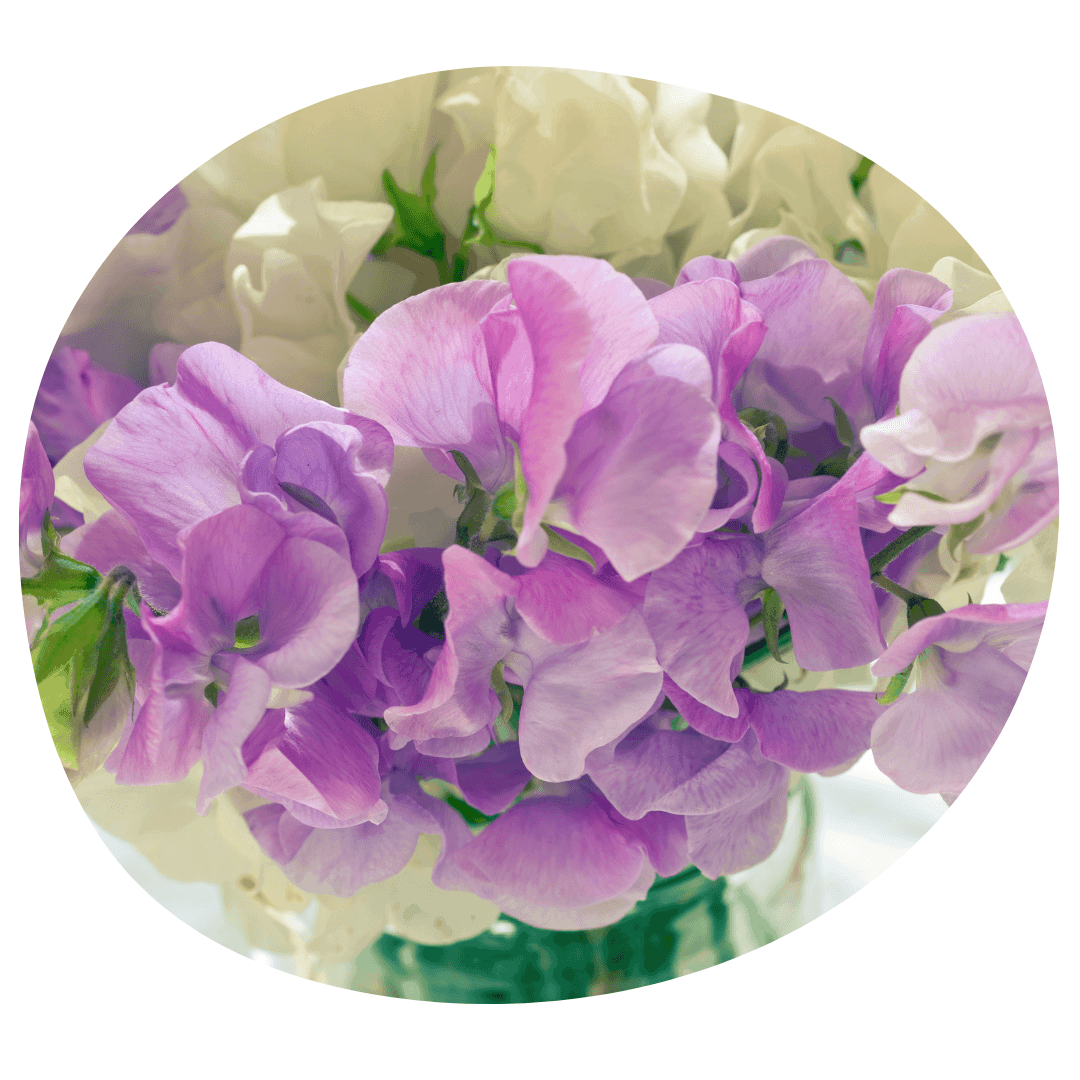How to Grow Sweet Peas
Growing Conditions
Sweet peas are fragrant climbing annuals that make a lovely addition to cut flower arrangements, wildflower meadows, and cottage gardens. They grow quickly and are available in a wide range of colours. Sweet peas require full sun, rich and well-draining soil, and support from a trellis or netting. As they prefer alkaline soil, add some lime to your planting location if your soil is acidic. They are heavy feeders and will appreciate a healthy application of compost to their bed before planting.
Starting
Sweet peas may either be direct sown or started indoors, but either way they require an early start. Soak your seeks for 24 hours prior to planting to soften their hard seed coat and speed up germination. They are slow to germinate and may require up to 20 days to sprout. To direct sow your sweet pea seeds, plant them as soon as the soil can be worked in the late winter or early spring. Plant your seeds 1" deep and 2" apart and keep moist. To start indoors, plant your seeds in large cells or 3-4" pots, as their roots grow fast and they may become rootbound if not given adequate space. After they have sprouted and begun to produce true leaves, they may be hardened off and moved out to the garden.
Find our full guide to seed starting here.

Care
Keep your sweet peas moist and consider mulching around the base of your plants to retain water in the soil and keep their roots cool. Sweet peas may have either a bush or climbing growth habit. The tall climbers will require support to reach their full height and may be grown on a trellis, plant netting, fence, or other structure. If ample compost was added before planting, your sweet peas may not require additional fertilizer. You may add a fertilizer with high phosphorus and potassium if needed; avoid high nitrogen as this will cause excess foliage growth and fewer flowers. Deadhead your plants regularly to encourage continued blooming.
Pests and Diseases
Aphids - Small green, black, or brown insects that feed on the sap of garden plants. You'll find them under leaves, at blossom tips, and in the joints of stems.Squirrels - Use bird netting or row cover to deter squirrels from eating your sunflower seeds.
Slugs and Snails - Common garden pests that feed after dark, leaving large patches of damage.
Powdery Mildew - White mildew on the top surfaces of leaves, starting as small spots and growing to cover the entire leaf.
Crop rotation, garden cleaning, and proper spacing between plants are the best ways to prevent problems caused by pests and diseases. Diatomaceous earth can be used to control crawling pest species, while sticky traps will catch flying pests. Row covers and insect netting can also prevent travelling pests from landing on your crops and causing damage. Ensure good drainage in your chosen planting spot to prevent problems with fungus and rot. Contact us for more specialized pest control methods such as beneficial nematodes.
Harvest
Pick your sweet pea flowers often to encourage more blooms to form. Sweet peas will continue to produce until the frost, though they may slow down in hot temperatures. Cut the flower stems when buds are not yet open for the longest vase life.

